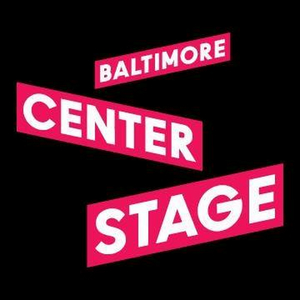Baltimore Center Stage to Co-Host Guides to Indigenous Baltimore Launch
These free, public resources include an illustrated brochure, website, and Guide to Indigenous Baltimore, featuring a mobile walking tour app.

Baltimore Center Stage and The Baltimore American Indian Center will co-host a virtual launch and community celebration for several first-of-their-kind expositions to Indigenous Baltimore; a twentieth century guide focusing on East Baltimore's Historic American Indian "Reservation." These free, public resources include an illustrated brochure, website, and Guide to Indigenous Baltimore, featuring a mobile walking tour app.
Baltimore is part of the ancestral homelands of the Piscataway and the Susquehannock tribes, and a diverse host of American Indian peoples from many nations have passed through or lived here at different times- and still do! In the mid-twentieth century, thousands of Lumbee Indians and members of other tribal nations migrated to Baltimore City seeking jobs and a better quality of life. They settled on the east side of town in an area that bridges the neighborhoods of Upper Fells Point and Washington Hill. Here, they created a vibrant, intertribal American Indian community which they affectionately referred to as their "reservation," in its heyday. In the decades since, due to a complex set of factors ranging from upward mobility, Urban Renewal, and gentrification, many American Indian people moved away from the area, which continues to transform. Subsequently, recent generations have never experienced "the reservation," and today, most Baltimoreans are surprised to learn it ever existed.
In 2016, community-based visual artist and folklorist Ashley Minner (Lumbee) began to formalize a very brief walking tour of the historic heart of the American Indian community of East Baltimore. In conversation with her elders, she came to realize there were many sites of significance that are no longer recognizable on the landscape or prominent in public memory. The information throughout these guides was produced through continued conversation and collaboration with elders, community members, and a tremendous amount of archival research. An all-star team of artists, designers, scholars, and culture bearers contributed their knowledge and expertise to give this information form. This work was funded by The Robert W. Deutsch Foundation, Alternate ROOTS, The American Folklore Society, The Dresher Center for Humanities, The University of Maryland Baltimore County, and The University of Maryland, College Park. Many more individuals and organizations have supported in other ways- for a complete list of acknowledgments, sources, and more, visit www.baltimorereservation.com on November 22, 2021, and after.
The Guide to Indigenous Baltimore app belongs to a larger family of digital mapping and mobile application projects created through the Guide to Indigenous Lands Project family. The Guide to Indigenous Lands Digital Mapping Project, founded by Dr. Elizabeth Rule (Chickasaw), is an initiative dedicated to the creating of mobile applications that map sites of Indigenous importance on lands across the present-day United States, Turtle Island, and beyond. The purpose of this project is to highlight contemporary, as well as historic Indigenous communities, discuss Native contributions to the world, and encourage engagement with the natural and built environments surrounding us all. This public, historically relevant project offers mobile applications in both iOS and Android formats, all of which are free to download and directed toward a general readership. If you are interested in creating a Guide to Indigenous Lands map and app for your city, tribal territory, state, ancestral lands, institution, university, or school, please reach out to Dr. Elizabeth Rule. You can learn more at http://www.elizabethrule.com/guide-to-indigenous-lands-project.
The launch will be livestreamed(11/22 @ 6PM EST), and will be emceed by E. Keith Colston (Lumbee/Tuscarora), Owner of Native America's Performers, LLC; and will feature remarks by Rico Newman (Choptico Band of Piscataway Indians), Chairman of the Maryland Indian Tourism Association; Linda Cox (Lumbee), Chair of the Baltimore American Indian Center Board of Directors; Annalisa Dias, Director of Artistic Partnerships & Innovation at Baltimore Center Stage; Jane Brown, President and Executive Director of the Robert W. Deutsch Foundation; Dr. Elizabeth Rule (Chickasaw),
Assistant Professor of Critical Race, Gender, and Culture Studies at American University; and Ashley Minner (Lumbee), whose fellowship with the Robert W. Deutsch Foundation funded the vast majority of the work being celebrated. Baltimore American Indian Center Board Chair Linda
Cox says, "I'm so proud that Ashley put together history about our Lumbee people in Baltimore. We have something that we can all be proud of."
The print guide to East Baltimore's Historic American Indian "Reservation" will be available at the Baltimore American Indian Center, the Baltimore Visitor Center when it reopens, Maryland State Welcome Centers at I-95 North and I-70, and a growing list of local culture and heritage organizations. The website address is www.baltimorereservation.com. The mobile app can be downloaded from any App Store or Google Play.
Comments
Videos

